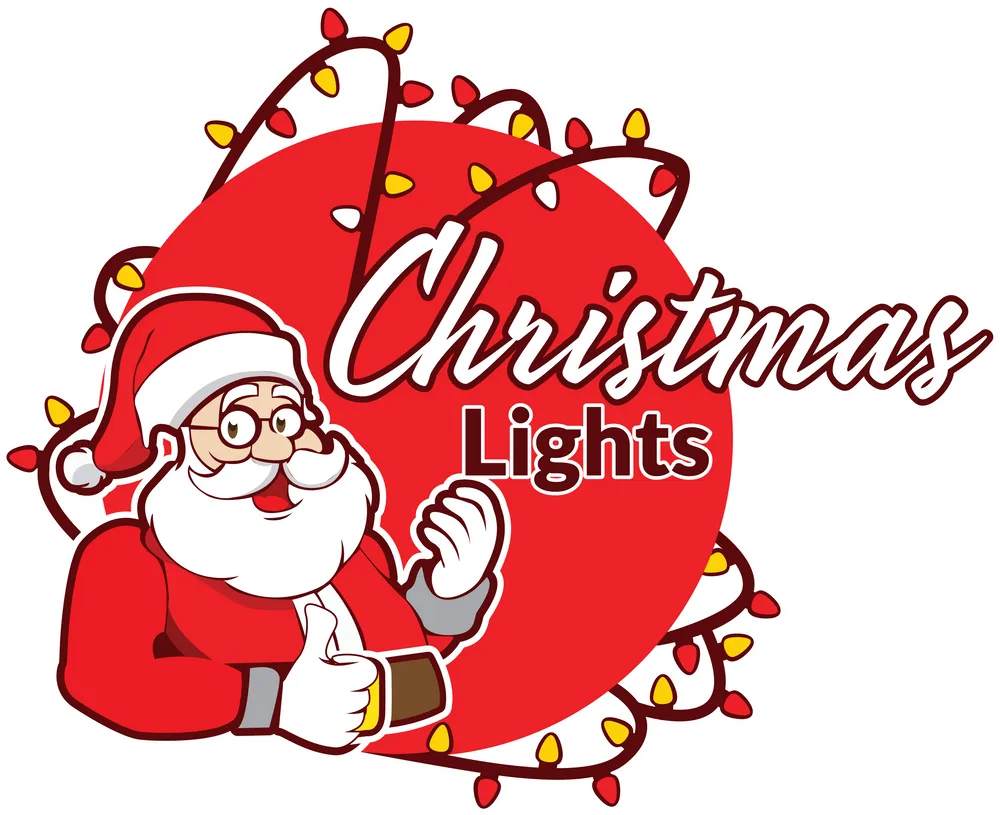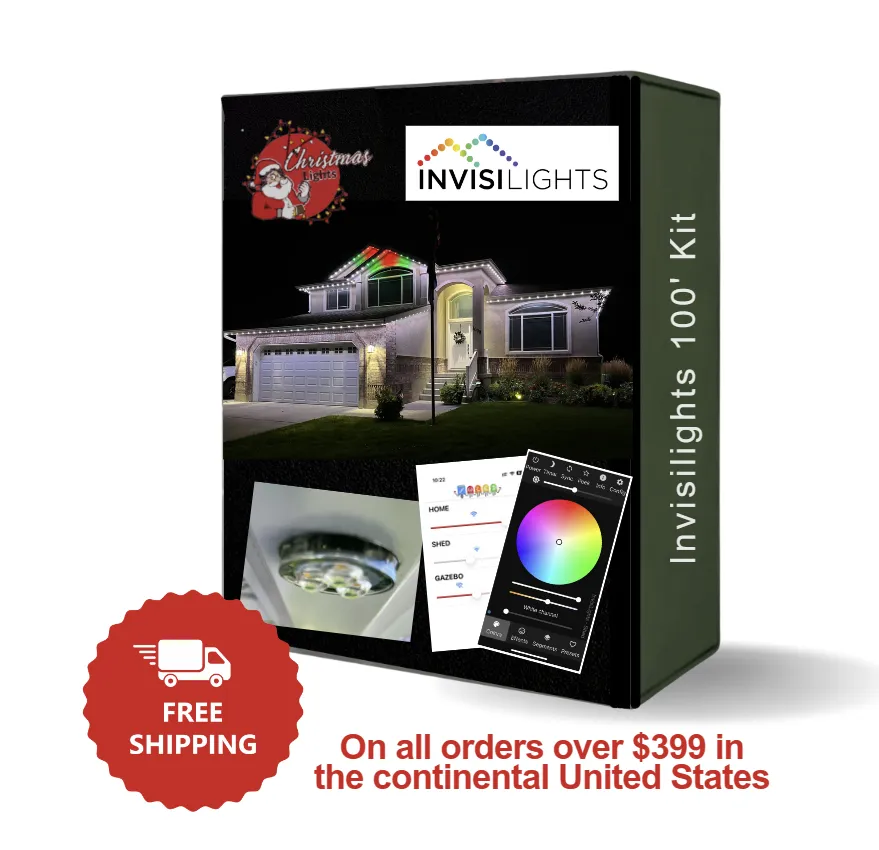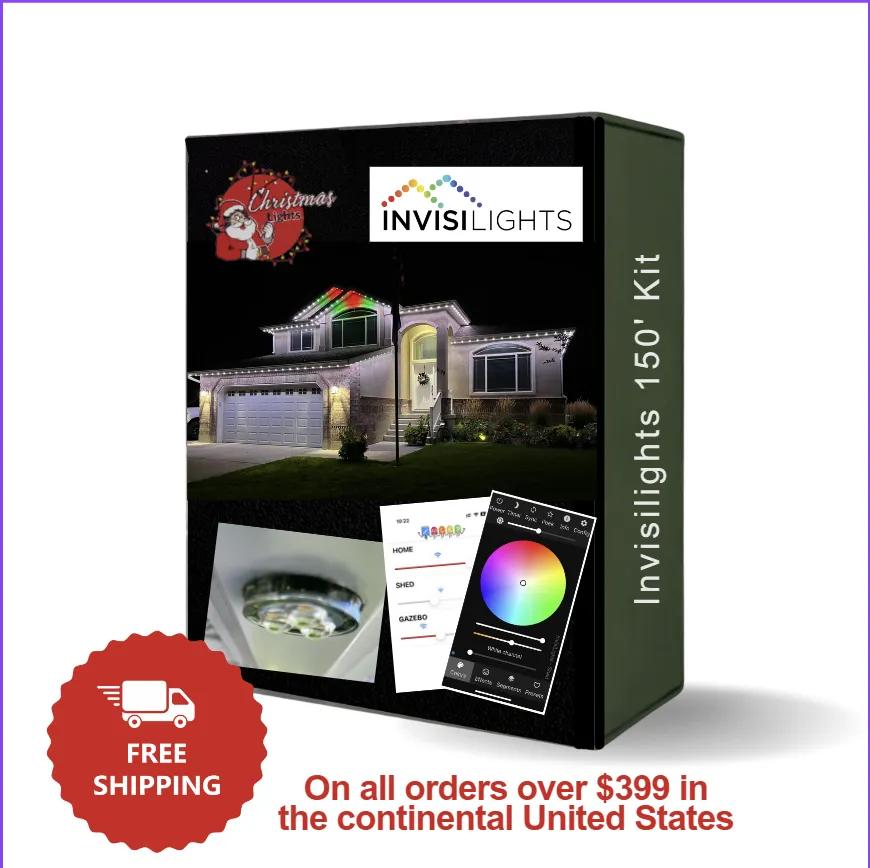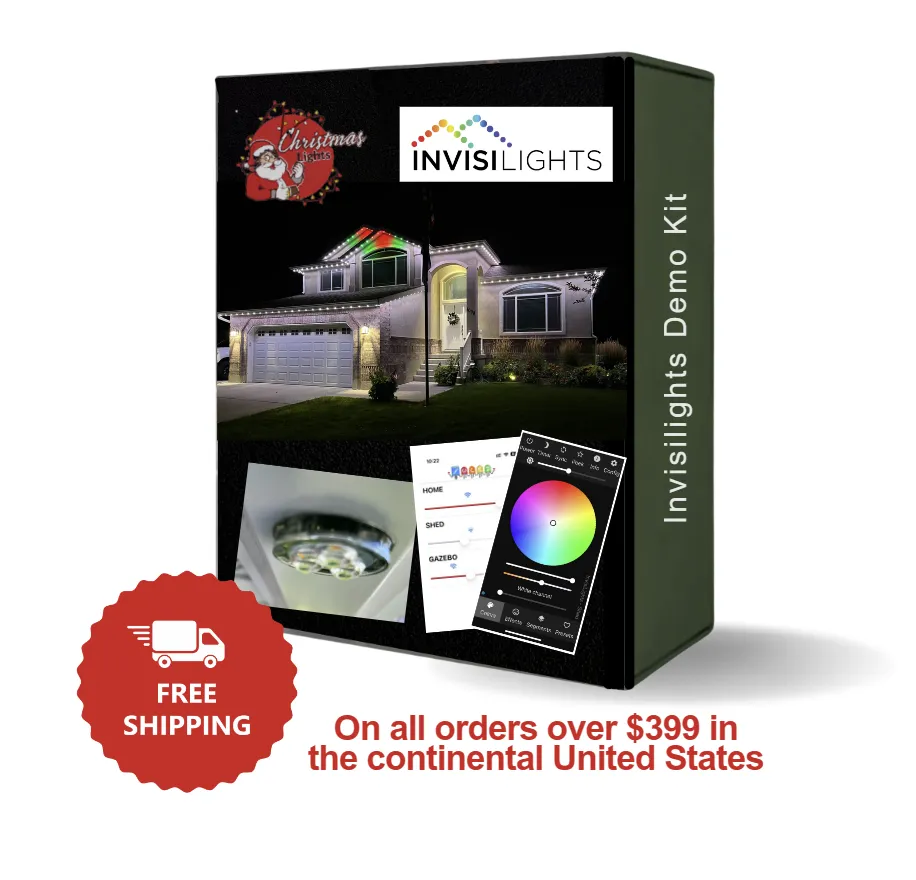Invisilights
Permanent Holiday Lighting
Customizable Lights for Any Event
WHAT YOU NEED TO KNOW BEFORE ORDERING
Total Linear footage of the installation.
This should include footage of lights and channel along with any Extensions or jumps you'll need to make
Where your controller box will be located
This is the most important step to planning out an installation, Without knowing where the controller will be you'll have no way to know the right materials to buy when it comes to extensions and accessories.
What Voltage system you want to use 24V or 36V
This is a decision you will make based on convince and efficiency, the most important factor with this will be the footage of each lighting run. If the total footage of a run is over 100' you'll need to either power inject on that run or switch to the 36V system that can go up to 200' before needing power injection.
Draw a Map
By mapping out the installation you'll be able to better understand and plan out the install giving you a better idea of what all you'll need to purchase to complete the job.
take the measurements from your map and add up the total number of materials you'll need.
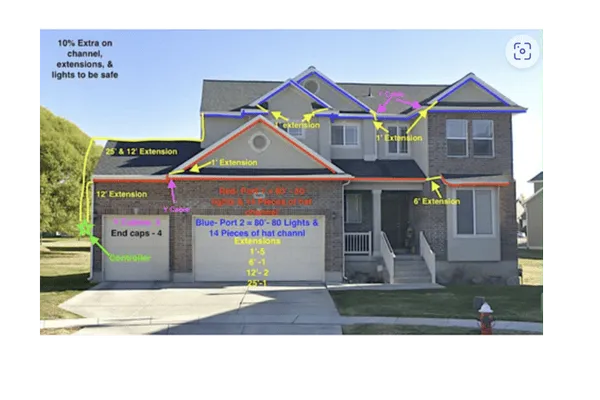
For the Map out example above the total material breakdown is:
System Voltage: 36V
Color of channel: Cameo
Channel Type: Hat
Total Lighted Footage: 160'
Power injection: NO
Controller: 1
Channel: 27- 6' sticks
Screws- 200
Lights: 175
1' extensions-7
6' Extensions-2
12' extensions-2
25- extensions- 1
Y Cables- 3
End caps- pack of 10
Absolute necessities
-Controller
-Lights
-Channel
-Screws
-Extension cables
Other Accessories
-Y Cable
-End Caps
- Signal boosters
-Power injection material
When would you need to power inject?
The controller will come with 3 outputs for your lighting runs, each 36V output can do a Max of 200', the 24V system can do a max of 100'. After that max you'll need to inject power. After you do so you can go an additional 100' with the 24V or 200' with the 36V system.
Power injection is needed due to voltage drop, voltage drop happens due to the length traveled away from the power source along with the gauge of the wire. due to the gauge of wire the lights and extensions run on it drops in voltage enough at 100' with the 24V system and 200' with the 36V system to effect the lights performance requiring a addition of power (Power Injection)
Materials needed for power injection 36V
Power injection pig female pig tale
Power injection Extension cables
Power injection T Cable.
Materials needed to Power inject 24V
16/2 - 12/2 Low voltage landscaping wire
Cut and Splice T cable
Water Proof Wire connectors
Discover the Transformative Power of Invisilights: Expertly Installed Permanent Lighting Solutions
Enhance your installation offerings with Invisilights, the premier permanent lighting solution designed for seamless integration into any property’s exterior architecture.
Crafted with high-quality aluminum channels and advanced LED technology, Invisilights delivers durability and superior energy efficiency—key selling points for your clients seeking long-lasting, cost-effective lighting solutions. Our system not only provides brilliant illumination but also boosts the aesthetic appeal and functionality of any home.
Offer your clients peace of mind with our robust 5-year warranty, ensuring reliable performance and minimal maintenance needs. This warranty supports your commitment to quality and customer satisfaction, making it easier for you to sell and install with confidence.
Our flexible, programmable system allows you to meet any client’s specific desires—from subtle accents to full-scale holiday displays—making it an adaptable choice for various applications. With Invisilights, you can cater to a wide range of preferences and needs, increasing your market reach and customer retention.
Choose Invisilights for your installations and add a transformative product to your portfolio that will impress clients and ensure your services remain in demand for years to come.
Frequently Asked Questions
What exactly comes in the 150' InvisiLights permanent outdoor lighting kit?
The InvisiLights kit is comprehensively equipped to ensure you have everything you need for installation. Each kit includes:
27 sticks of 6-foot Aluminum Channel to house and protect the lighting elements.
150 feet of dynamic RGBW LED Lights, which includes 23 sets of 6-count and 14 sets of 1-count lights, allowing for extensive coverage and diverse configuration options.
2 Data Boosters to enhance signal strength across the lighting installation, ensuring consistent control and color output.
A 320W Power Supply capable of supporting up to 190 puck lights, providing ample power for even the most extensive setups.
1 GFCI Outlet Adapter to ensure safe outdoor electrical connections.
1 Controller that allows you to manage and customize the lighting effects easily.
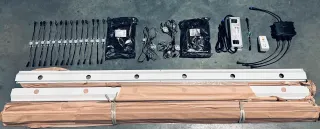
Will I need any additional components besides what's included in the Invisilights permanent lighting kit?
While the Invisilights kit comes with all the essential components for a standard installation, there are a couple of scenarios where you might need additional items:
Jumper Wires: Depending on the layout of your installation and the number of gaps or 'jumps' between the sections of lights, you may require jumper wires. These wires help bridge the gaps without losing the continuity of the light sequence, ensuring a smooth and uniform display across more complex architectures.
Data Boosters: If any section of your lighting setup is more than 15 feet away from the control box, additional data boosters will be necessary. Data boosters help maintain the integrity and brightness of the lights over longer distances, ensuring consistent performance throughout your installation.
Can I choose the color of the aluminum channel for my InvisiLights kit?
Yes, you can select your preferred color for the aluminum channel to match your home’s exterior or personal taste. Please make sure to specify your color choice in the notes at checkout when you place your order.
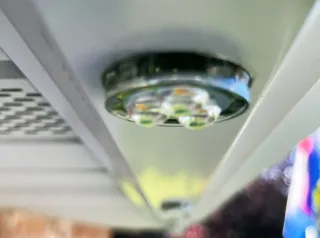
How do the included components of the InvisiLights kit enhance the lighting system?
Each component in the InvisiLights kit plays a crucial role in creating an effective and stunning lighting display:
Aluminum Channels: Provide a durable, weather-resistant housing for the LED lights, which helps in maintaining a clean and nearly invisible look during the day.
RGBW LED Lights: Offer vibrant, full-spectrum color and white light combinations, making it perfect for any occasion from festive holidays to elegant ambient lighting.
Data Boosters: Ensure that the signal remains strong across longer distances, which is crucial for larger installations.
Power Supply: Designed to efficiently handle the energy needs of the system without overload, ensuring safety and durability.
GFCI Outlet Adapter: Adds an extra layer of safety by protecting against electrical shorts and surges, particularly important in outdoor settings.
Controller: Provides the flexibility to customize and control the lighting sequences, colors, and patterns right from your smartphone or controller, adding convenience and advanced functionality to your lighting system.

Can I use Invisilights year-round?
Absolutely! Invisilights are designed for versatile use throughout all seasons. Whether you're celebrating a special occasion, setting a mood for a party, Love your favorite sports team, or simply enhancing your home's ambiance, our lighting systems provide the perfect solution for any event, big or small.

Can I set timers and events for Invisilights?
Yes, Invisilights feature advanced programmable settings that allow you to schedule lighting for specific events and automate timers. This functionality ensures that your lighting preferences are perfectly aligned with your lifestyle, turning on and off at predetermined times without any manual intervention.

Is it possible to achieve warm or soft white with Invisilights?
Absolutely, Invisilights are equipped with RGBW technology, which includes a dedicated white LED alongside the standard red, green, and blue LEDs. This addition allows the system to produce authentic warm white, soft white, and various other shades of white with greater accuracy and intensity compared to traditional RGB systems. This capability ensures that you can effortlessly tailor the lighting to fit the desired ambiance and aesthetic of any environment, providing precise control over both vibrant colors and the subtlety of different white tones.

How do you ship your product?
Our products are shipped directly from our warehouse using reliable shipping carriers to ensure timely and safe delivery. Each product is securely packaged to prevent damage during transit, and we provide tracking information so you can follow your order’s journey to your doorstep.
Where are the controller and power supplies installed?
The controller and power supplies for Invisilights are typically installed in an accessible location such as a garage or utility room. These components connect to your home’s WiFi network, allowing seamless control over the lighting system via our user-friendly mobile app.
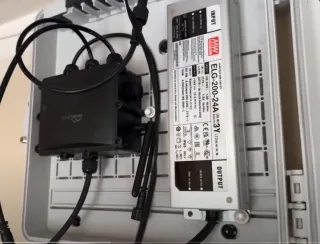
How long do Invisilights last?
Invisilights are engineered to last, with each LED bulb boasting a lifespan of over 50,000 hours. Given a typical usage of 10 hours per night, this translates to approximately 5,000 nights. This means your Invisilights could illuminate your home's exterior for nearly 14 years under these conditions, ensuring that your investment not only adds beauty but also long-term value to your property.
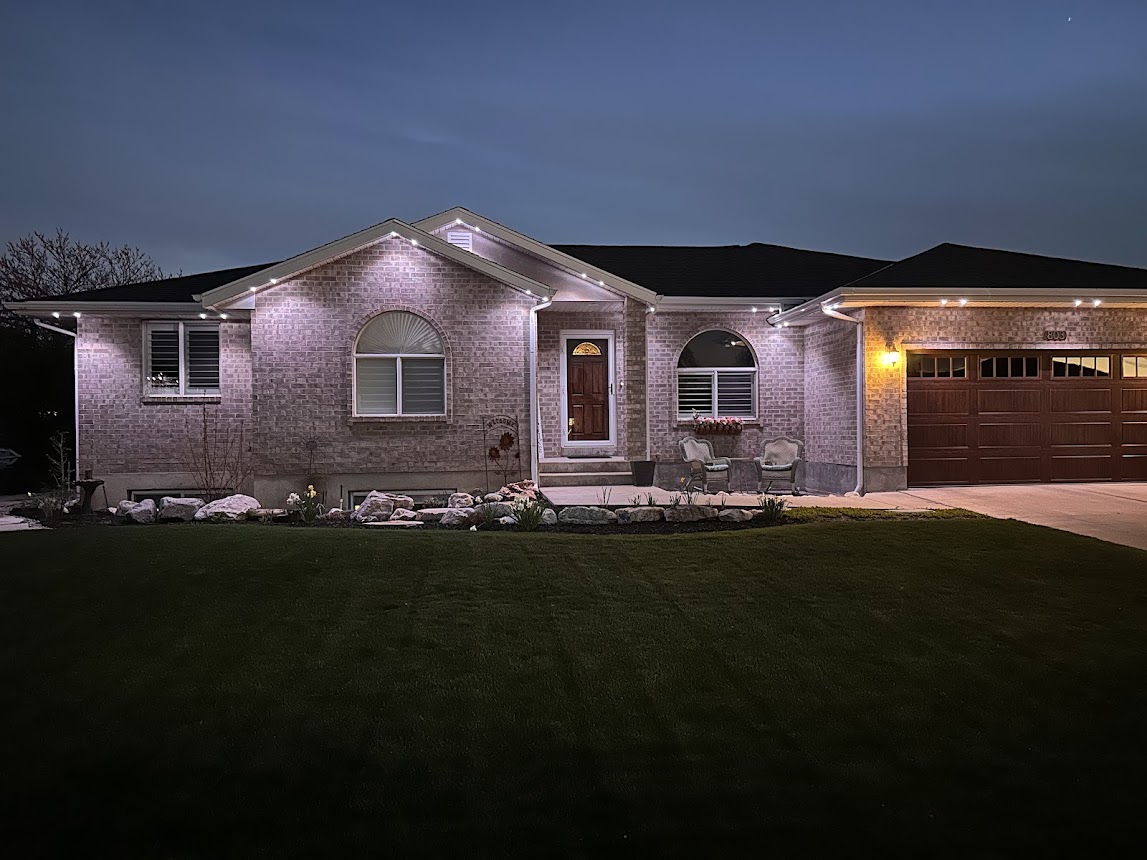
Are Invisilights dimmable?
Yes, all Invisilights are fully dimmable. This feature allows you to adjust the intensity of the light to suit various occasions, from a soft glow for a romantic evening to bright, vibrant colors for a festive celebration.

What types of custom channels are available?
Invisilights offers two types of custom channels, available in 40 different colors, ensuring a nearly invisible installation. These channels are designed to blend seamlessly with your home’s architecture, providing discreet yet effective lighting.

Can I control different zones independently?
Yes, the Invisilights system supports multiple zones which can be controlled independently or synchronized. This functionality allows for intricate lighting designs that can vary across different areas of your home, enhancing the overall impact and utility of your installation.
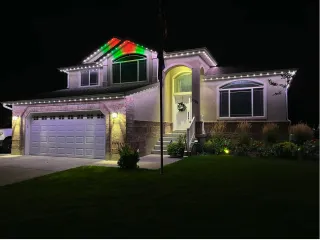
What is outdoor permanent lighting?
Permanent lighting refers to architectural-grade lighting systems that are installed permanently on your property to provide year-round illumination.
How does permanent lighting differ from traditional holiday lighting?
Unlike traditional holiday lighting, which is typically temporary and used only during specific seasons, permanent lighting is installed once and can be used throughout the year for various occasions

Discover Expert Tips on Our Blog

Reviewing Your 2024 Numbers: Your Blueprint for 2025
As we approach the end of 2024, it's crucial to analyze your business performance and start planning for 2025. Understanding and tracking your Key Performance Indicators (KPIs) is essential for sustainable growth and long-term success. Let's explore the vital metrics you should be monitoring and how to use them to build a stronger business in the coming year.
Understanding the Importance of KPIs
Statistics paint a sobering picture: 80% of businesses fail while only 20% succeed. The difference often lies in how well owners understand and track their numbers. Hope isn't a strategy – you need concrete data and measurable goals to guide your business decisions. By tracking the right KPIs, you can make informed decisions about growth, pricing, marketing, and operations.
Essential KPIs to Track
Average Job Size
Your average job size is a crucial metric that indicates the typical value of each customer interaction. This number helps you understand your revenue potential per customer, resource allocation efficiency, target market alignment, and pricing strategy effectiveness. For example, if your average job is $1,000 and you want to reach $100,000 in revenue, you'll need approximately 100 jobs. Understanding this relationship helps you plan your marketing and operational capacity accordingly.
Profit Margins
Many business owners make the critical mistake of confusing revenue with profit. True profit only exists after accounting for all your expenses, including cost of goods sold (COGS), labor costs, operating expenses, marketing costs, insurance, overhead, and taxes. A good rule of thumb for maintaining healthy profit margins is to aim for a three-way split in your revenue: one-third for labor, one-third for costs and marketing, and one-third for profit. This balanced approach ensures sustainable growth and adequate cash flow.

Lead Conversion Rate
Your lead conversion rate reveals how effectively you turn prospects into customers. This crucial metric requires tracking your total number of leads received, quotes provided, and jobs closed to calculate your overall conversion percentage. Industry standards suggest that a healthy conversion rate typically falls between 30-50%. If you're converting higher than 75% of leads, you might be pricing too low and leaving money on the table. Conversely, if you're below 20%, it's time to examine your sales process and pricing strategy for potential improvements.
Quote Response Time
In today's instant-gratification market, speed matters tremendously. Your ability to quickly respond to inquiries, provide quotes, schedule jobs, and complete work directly impacts your success rate with potential customers. Modern consumers expect rapid responses, and businesses that can deliver quick, professional quotes often see higher conversion rates. Implementing automated systems and streamlined processes for quote generation and delivery can significantly improve your response times and, consequently, your close rates.
Employee Productivity
For businesses with staff, tracking employee productivity becomes essential for growth and profitability. This involves monitoring revenue per employee, jobs completed per day, quality metrics, customer satisfaction scores, and callback rates. By setting clear productivity goals and implementing performance-based incentives, you can drive better results while maintaining high service standards. Regular monitoring of these metrics helps identify training needs and opportunities for process improvement.
Customer Satisfaction Metrics
Customer satisfaction serves as a leading indicator of business health and future growth potential. Effective monitoring includes tracking your review rates, maintaining a strong average rating, measuring response times to customer inquiries, monitoring callback frequency, and addressing customer complaints promptly. Aim to achieve at least a 25% review rate (25 reviews per 100 jobs) while maintaining a strong average rating. This feedback not only helps improve your services but also serves as powerful social proof for potential customers.
Repeat Customer Rate
The percentage of customers who return for additional services provides valuable insight into your business's health and customer satisfaction levels. A strong repeat customer rate indicates excellence in several key areas: quality service delivery, fair pricing, strong customer relationships, and effective follow-up processes. For seasonal businesses, achieving an 80-85% return rate year over year should be your target. This high retention rate not only provides a stable revenue base but also reduces marketing costs since retaining existing customers is typically less expensive than acquiring new ones.
Marketing Effectiveness
Understanding your marketing effectiveness requires careful monitoring of several interconnected factors. Your marketing spend should typically range between 10-15% of revenue, but the key lies in understanding the return on this investment. Track your cost per lead, overall return on marketing investment, and the effectiveness of different lead sources. Pay particular attention to your referral rates, as referral business often produces higher-value customers with better conversion rates. By analyzing which marketing channels produce the best results, you can optimize your spending and maximize return on investment.

Planning for 2025
Setting Revenue Goals
Effective planning for the coming year requires working backward from your desired revenue goal. Begin by determining your target annual revenue, then calculate the number of jobs you'll need based on your average ticket size. From there, determine the number of leads required based on your conversion rate, and plan your marketing budget accordingly to generate those leads. Throughout this process, carefully consider your operational capacity to ensure you can fulfill the projected volume while maintaining quality standards.
Operational Planning
Successfully scaling your business requires careful attention to operational planning. Consider your equipment needs for the projected volume, evaluate staffing requirements to maintain service quality, and develop comprehensive training programs to ensure consistent service delivery. Look for opportunities to improve processes and invest in technology that can increase efficiency and improve customer experience. Each of these elements should be carefully evaluated and planned for in advance of your growth.
Marketing Strategy
Your marketing strategy should focus on consistency and multi-channel presence. Develop a comprehensive plan that includes regular social media engagement, systematic review generation, structured referral programs, targeted local advertising, active community involvement, and strategic digital marketing efforts. Remember that consistency is paramount – whatever marketing strategies you choose, maintain them year-round rather than implementing them sporadically.
Financial Management Tips
Sound financial management forms the foundation of sustainable business growth. Implement good financial practices by setting aside 15% of revenue for taxes and meeting with your CPA quarterly to review performance and plan strategically. Consider major purchases carefully, explore opportunities for charitable giving, and look into retirement account contributions. When beneficial, consider prepaying expenses to optimize tax positioning.
Profit First System
The Profit First system provides a structured approach to financial management that can transform your business's financial health. This system advocates for separate accounts dedicated to operating expenses, tax savings, profit, owner's compensation, and marketing. By segregating funds this way, you ensure proper allocation of resources and maintain better control over cash flow. This systematic approach helps prevent the common problem of operating on thin margins and ensures profitability is built into your business model.

Growth Strategies
Your growth strategy should encompass several key areas. Regular review and adjustment of pricing ensures profitability while remaining competitive. Consider implementing premium pricing to attract quality customers and develop value-based pricing strategies rather than competing solely on price. Look for opportunities to package services for higher average tickets and explore ways to expand your service offerings seasonally.
Service Expansion
Growing your business often requires thoughtful service expansion. Look for complementary services that align with your current offerings and expertise. Consider developing off-season revenue streams to maintain steady income throughout the year. Create comprehensive maintenance programs that provide recurring revenue and help smooth out seasonal fluctuations. When expanding services, focus on premium offerings that can increase your average ticket size while providing additional value to customers.
Team Development
Building a strong team requires a proactive approach to hiring and development. Rather than waiting until you're overwhelmed with work, hire ahead of your growth curve to ensure proper training and seamless integration of new team members. Implement comprehensive training programs that cover both technical skills and customer service. Create clear performance metrics that align with your business goals and develop a leadership pipeline to support sustainable growth. Throughout this process, focus on building a strong company culture that attracts and retains top talent.
Taking Action
Success in implementing these strategies requires a systematic approach to reviewing and improving your business. Begin by gathering all your 2024 data to calculate key metrics and identify trends and patterns. Look for areas that need improvement and opportunities for growth. Use this information to create specific revenue targets and break them down into achievable monthly goals. Establish clear performance benchmarks and create monitoring systems to track progress.

Once you have your goals in place, develop a detailed implementation plan. Create a marketing calendar that outlines your promotional activities throughout the year. Plan your staffing needs based on projected growth and schedule equipment purchases to support expansion. Develop training programs that will support your growth while maintaining service quality. Most importantly, commit to regular review of your metrics and be prepared to adjust strategies as needed.
Regular monitoring and adjustment form a crucial part of successful business growth. Review your metrics monthly to ensure you're on track to meet your goals. When you identify areas that aren't performing as expected, be prepared to adjust your strategies quickly. Celebrate successes with your team to maintain motivation and morale, but address problems promptly before they can impact your growth trajectory.
Building a successful business isn't about hoping for the best – it's about understanding your numbers and taking consistent action to improve them. By tracking these KPIs and planning strategically for 2025, you position your business for sustainable growth and increased profitability. Success requires consistent tracking of your numbers, setting realistic but ambitious goals, implementing systems for improvement, and maintaining focus on quality and value.
Remember that consistent marketing efforts, proper tax planning, and strategic investment in growth are essential elements of long-term success. Take time now to analyze your 2024 performance and create a solid plan for 2025. Your future success depends on the planning and systems you put in place today. By following these guidelines and maintaining focus on your key metrics, you can build a stronger, more profitable business in the coming year.
The difference between businesses that thrive and those that merely survive often comes down to how well they track, understand, and act on their key performance indicators. Make 2025 your year for strategic growth by implementing these systems and maintaining focus on the metrics that matter most to your success.

Q1: What are Key Performance Indicators (KPIs) and why are they important for my business?
A: Key Performance Indicators are specific metrics that help you measure your business's success. They're crucial because they provide concrete data to guide decision-making about growth, pricing, marketing, and operations. Rather than relying on gut feelings or hope, KPIs give you measurable data to track progress and identify areas needing improvement. They're essential for sustainable growth and long-term success.
Q2: What's a healthy profit margin for my business, and how should I structure my revenue split?
A: A healthy business should aim for a three-way split of revenue: one-third for labor, one-third for costs and marketing, and one-third for profit. This means targeting a true profit margin of around 33% after accounting for all expenses, including COGS, labor, operating expenses, marketing, insurance, overhead, and taxes. This split ensures sustainable growth and adequate cash flow for reinvestment in your business.
Q3: What's considered a good lead conversion rate, and what should I do if mine is too high or too low?
A: A healthy conversion rate typically falls between 30-50%. If you're converting more than 75% of leads, you're likely pricing too low and should consider raising your prices. If you're below 20%, examine your sales process, pricing strategy, and target market alignment. Either extreme suggests room for optimization in your business model.
Q4: How important is response time to inquiries, and what's considered "fast enough"?
A: In today's market, rapid response is crucial. Aim to respond to initial inquiries within 5-15 minutes during business hours. Companies that respond within 5 minutes of receiving a lead are 21 times more likely to convert that lead into a customer compared to those that wait 30 minutes. Implement automated systems for after-hours responses and streamlined processes for quote generation to maintain quick response times.
Q5: How can I effectively track and improve employee productivity?
A: Track key metrics including revenue per employee, jobs completed per day, quality metrics, customer satisfaction scores, and callback rates. Set clear performance goals and implement incentive programs tied to these metrics. Regular training, feedback sessions, and process improvements based on data help optimize productivity. Consider using digital tools to track these metrics automatically.

Q6: What percentage of my revenue should I spend on marketing, and how do I know if it's effective?
A: Aim to spend 10-15% of revenue on marketing. Track your return on marketing investment by monitoring cost per lead, conversion rates from different marketing channels, and overall customer acquisition costs. Measure the effectiveness of each marketing channel separately and adjust spending based on performance. Don't forget to track referral rates, as referral business often produces higher-value customers.
Q7: How can I implement the Profit First system in my business?
A: Start by setting up separate bank accounts for operating expenses, tax savings, profit, owner's compensation, and marketing. Allocate percentages of income to each account based on your business model and goals. Set aside 15% for taxes, maintain an operating expense account for day-to-day costs, and ensure you're building both profit and owner's compensation into your pricing structure. Review and adjust allocations quarterly with your CPA.
Q8: What's a healthy customer review rate, and how can I improve it?
A: Aim for at least a 25% review rate (25 reviews per 100 jobs) with a strong average rating. Improve your review rate by implementing a systematic approach to requesting reviews, making it easy for customers to leave feedback, responding to all reviews promptly, and addressing any issues quickly. Consider automating review requests as part of your post-job follow-up process.
Q9: How do I set realistic revenue goals for the coming year?
A: Start with your desired annual revenue target and work backward. Calculate how many jobs you'll need based on your average ticket size, then determine required leads based on your conversion rate. Consider your operational capacity, including equipment and staffing needs. Break down annual goals into monthly targets, accounting for seasonal fluctuations. Ensure your marketing budget aligns with the lead generation requirements to hit these goals.
Q10: What should my repeat customer rate be, and how can I improve it?
A: For seasonal businesses, aim for an 80-85% return rate year over year. Improve this rate by delivering consistent quality service, maintaining fair pricing, building strong customer relationships, and implementing effective follow-up processes. Regular communication, loyalty programs, and early booking incentives can help maintain high retention rates. Remember that retaining existing customers is typically less expensive than acquiring new ones.
Copyright ©2025 All Right Reserved website designed by christmaslights.io
Terms of Service / Privacy Policy
Have questions or need assistance?
Contact us at (855)619-LITE

